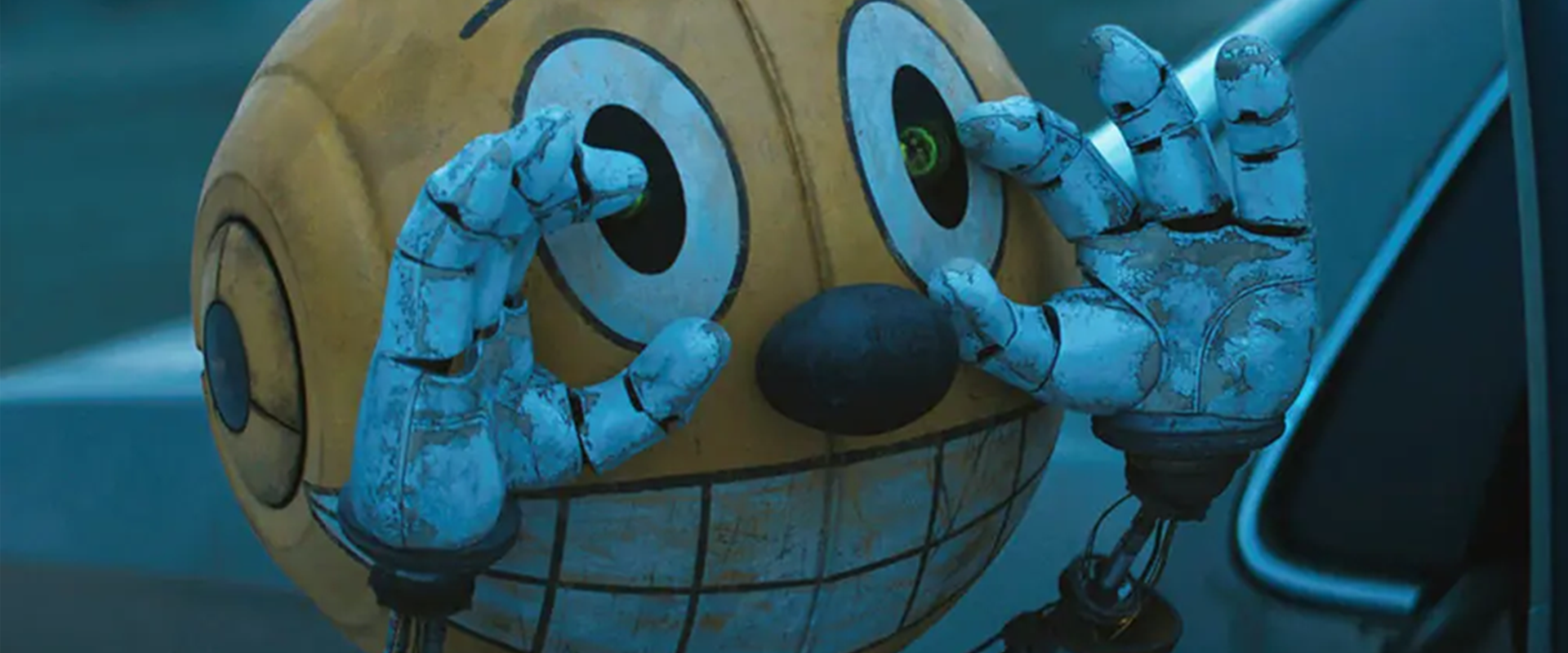Digital Domain Creates VFX for Russo Brothers’ The Electric State
Avril 21, 2025
Featured in Post Perspective
Netflix, in partnership with the Russo Brothers, has adapted Simon Stålenhag’s 2018 graphic novel The Electric State into a film set in a post-robot uprising 1990s America. The story centers on Michelle (Millie Bobby Brown), an orphan searching for her brother. Digital Domain, led by VFX supervisor Joel Behrens, was responsible for visual effects that brought Michelle’s journey and the film’s robot characters to the screen. (Check out the VFX breakdown here.)
As the lead VFX vendor, Digital Domain contributed over 850 shots, collaborating with production VFX supervisor Matthew Butler, the Russo Brothers and production designer Dennis Gassner. The team focused on character design and development for robots such as Cosmo, Herman, Mr. Peanut and Colonel Marshall Bradbury (Giancarlo Esposito). The studio also produced 61 character builds and nearly 480 assets, including environmental elements.
Digital Domain prioritized creating realistic movements and interactions to make the robot characters feel authentic and lifelike. To accomplish this, its team carried out extensive motion studies, which included an evaluation of real robots from Boston Dynamics and the latest advancements in modern robotics, to ensure that the robots’ joints and overall structures were both logical and physically plausible.
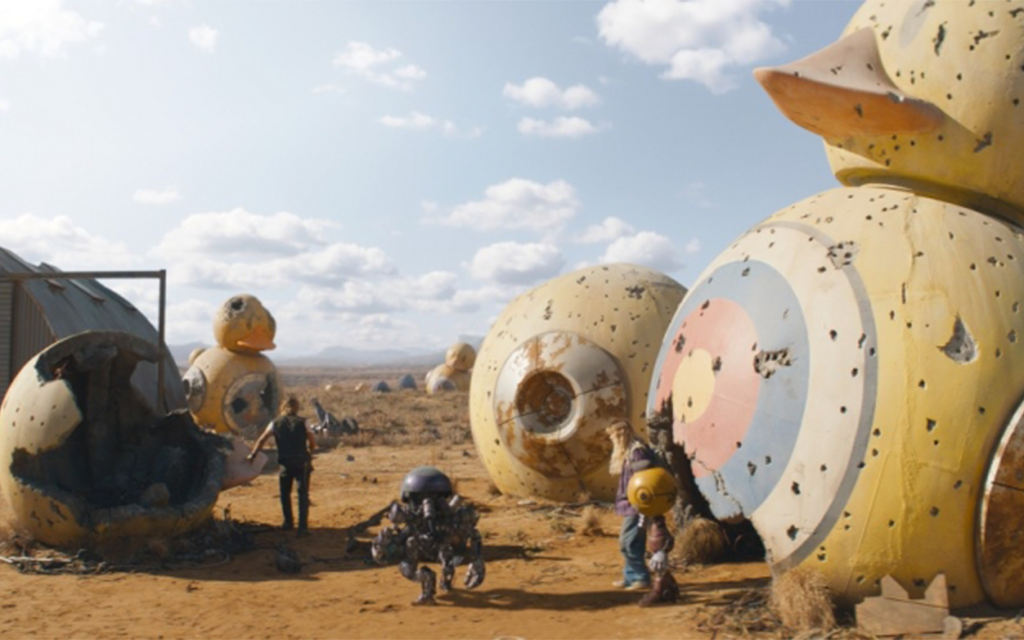
Digital Domain look development and texture teams ensured that all the robots functioned realistically and looked visually impressive. Each hero character needed to withstand scrutiny in close-up shots, requiring meticulous attention to detail in their design and animation. This emphasis ensured that every subtle movement and expression conveyed the characters’ emotions, enhancing their realism.
Digital Domain artists also considered scale, design and the desired look, taking illustrations and creating rough mockups while adding additional detail. For example, Digital Domain artists designed Herman’s face to incorporate the CRT elements of the screen, determining how he would move and emote with the retro design. The artists also considered the performances of the on-set motion actors who were captured in real time using Xsens motion capture suits and witness cameras, which greatly informed the animation process.
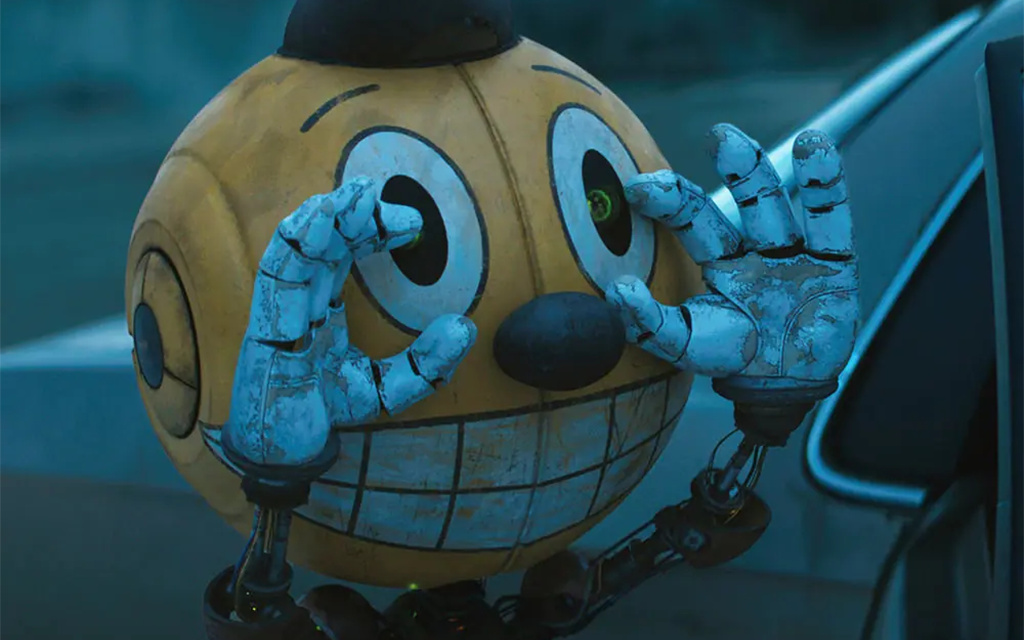
Cosmo
Directly inspired by the book, the character Cosmo does not speak, instead communicating solely through pre-recorded voice recordings from the “Kid Cosmo” cartoon. This required careful attention to Cosmo’s physical action as its own form of speech. Much of the emoting and information Cosmo conveys relies on physical acting, presenting a challenge for the animation team.
Animation supervisor Liz Bernard led the team responsible for crafting performances for a variety of robots, including Cosmo. “Our overall directive was to focus on the subtleties of performance. For characters like Cosmo, we relied on pantomime and body language to convey his personality and intentions,” she explains. “Head tilts, changes in eye direction, posture changes and hand posing were key to building his emotional presence on the screen.”
To enhance this expressiveness, Digital Domain artists added lights to his eyes that flicker, dim and brighten to reflect his emotional cues. While subtle, these effects significantly enhanced Cosmo’s performance.
Other Robots
The non-book characters Herman, the Marshall and Mr. Peanut were created specifically for the film, necessitating several rounds of detailed design work for Digital Domain. The studio created Herman in both a four-foot primary form and a 20-foot version, complete with a distinct color palette. The Digital Domain team specifically engineered his legs to minimize the need for pistons, enhancing his functionality.
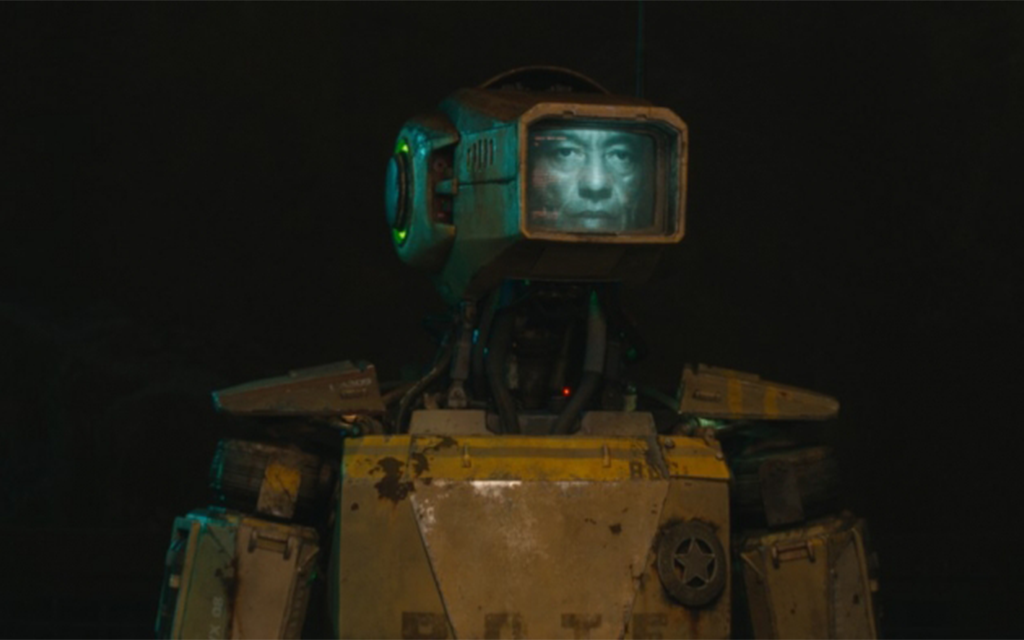
The Marshall, one of the film’s more narratively complicated characters, is a drone robot, meaning that he does not have a mind of his own but is, instead, directly operated by a human. Digital Domain developed the drone robots — whose large, elongated heads were based on the shape of the book’s Sentre Neurocaster VR helmets — and made each drone’s head show a video feed of its human operator in real time, helping distinguish between the drones and the more sympathetic, sentient robots. The Digital Domain animators also gave the drones a more clunky, heavier walking style, as they were meant to feel more cold and inhuman than the other robots.
Creating Mr. Peanut was complex because the team needed to design an animatronic robot that could speak without appearing uncanny yet still look photorealistic. They began with a standard set of about 80 facial shapes typically used for animating human characters but, in time, discovered that restricting the shapes to about a dozen gave a much more charmingly animatronic style to his facial performance. As one of the oldest characters in the film, they crafted him to embody the essence of his long history, making him appear as though he had been around for 40 to 50 years. Subtle cracking in his skin layer and subtle texture variations, combined with the character’s slight limp and use of a cane, all helped to explain his past through his physical appearance and performance.
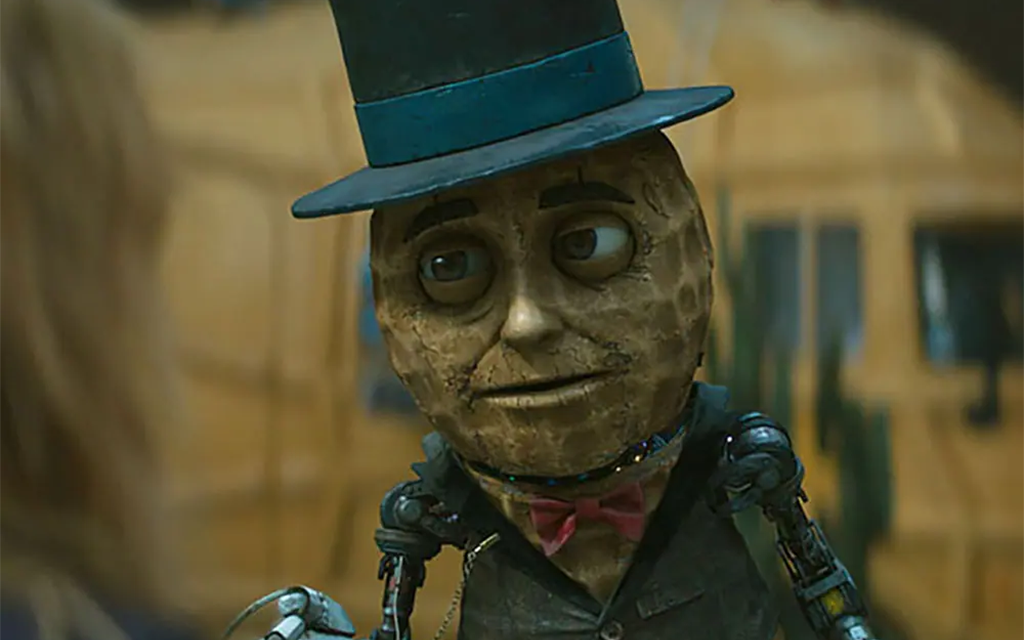
“As far as character pipeline and animation are concerned, this project marked a monumental leap forward for our entire team in terms of managing both the volume and complexity of characters,” says Behrens.
The Haunted Amusement Park
In the haunted amusement park scene, the group arrives at Happyland and encounters several scavenger robots. The sequence features crowd work by the Digital Domain team, including a chase sequence through the amusement park where the Sentre drones and Marshall pursue Cosmo. Later in the scene, the Marshall and Mr. Peanut engage in a fierce battle within the mad scientist lab. The Digital Domain team recreated the lab in CG by scanning and digitally rebuilding the set, which enabled them to choreograph the fight more precisely during post-production. The team also executed FX work, including the use of Tesla coils, sparks, robot damage and interactive lightning arcs, which added to the dramatic atmosphere.
The Mall Sequence
The mall sequence, shot on location, posed significant challenges, as it required the inclusion of hundreds of robots. For this sequence, Digital Domain incorporated and animated hundreds of robots, using crowd simulations alongside hero animated robots. While Digital Domain created many of the robots using its Autodesk Maya pipeline, others were developed by different vendors, requiring Digital Domain to ingest and integrate those assets to populate the scenes.
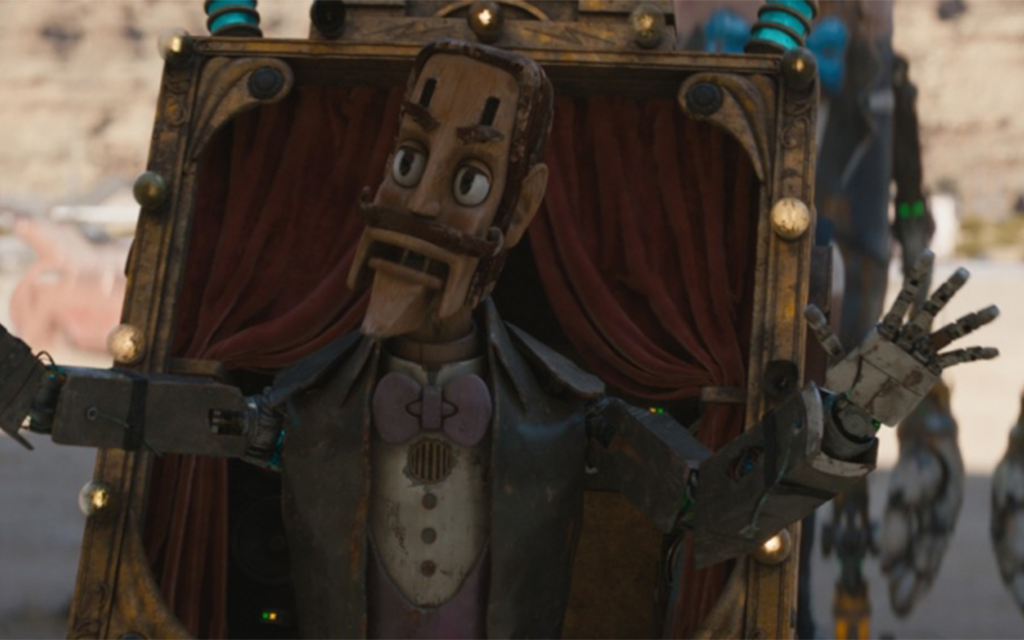
These crowds were unconventional as they were composed of various robot styles, each with unique proportions. For example, some robots moved on tracks instead of wheels, some were bipeds and others had three legs. This diversity required the animation team to animate each individual character. Each animator was responsible for their own group of robots, infusing each character with its distinct style and personality.
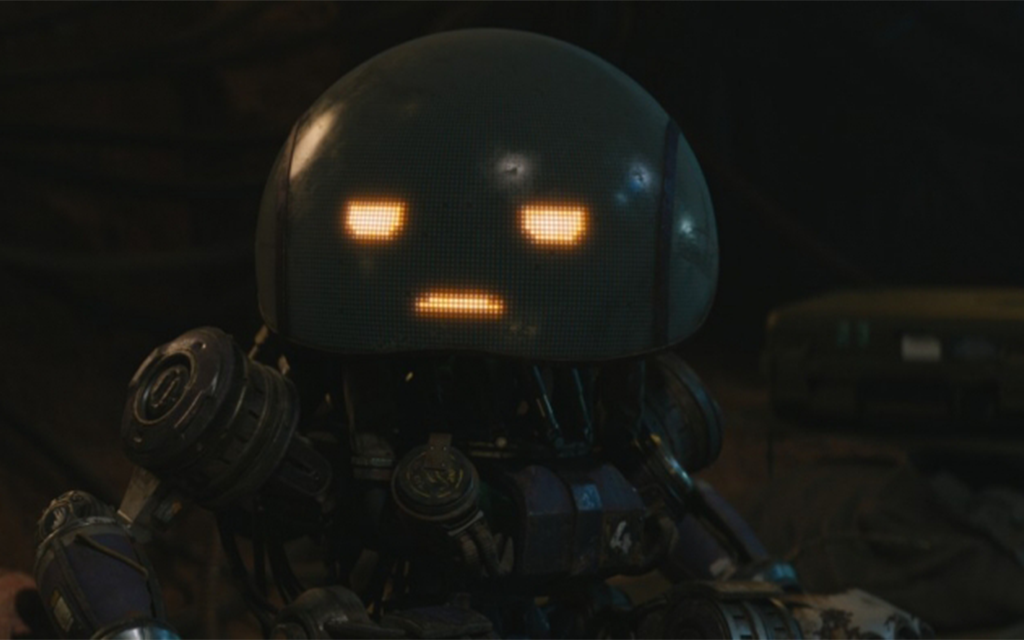
Digital Domain was also responsible for other key sequences, such as the mine sequence, the end battle sequence and the walk across the exclusion zone desert. Digital Domain also contributed to such environments as Fort Hull, the exterior of the mine, the exclusion zone, the robot sanctuary mall and the Happyland amusement park.
Collaborating closely with Butler and the Russo Brothers, Digital Domain’s visualization team also provided technical visualization and previz to fine-tune elements such as timing, speed and tempo. Led by visualization supervisor Jason Donnelly, the viz team transformed scripted moments into dynamic sequences and also contributed to character design, concept and look development.
Other tools used by Digital Domain on the show include: Foundry Mari, Silhouette, and Mocha Pro.


